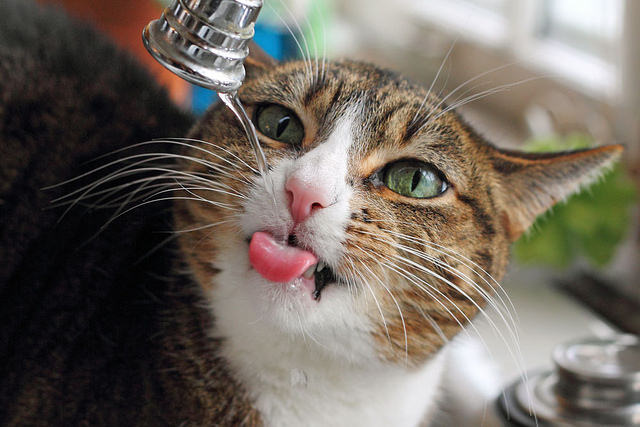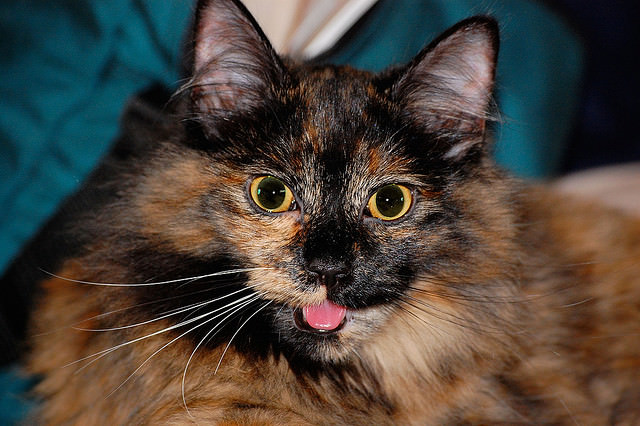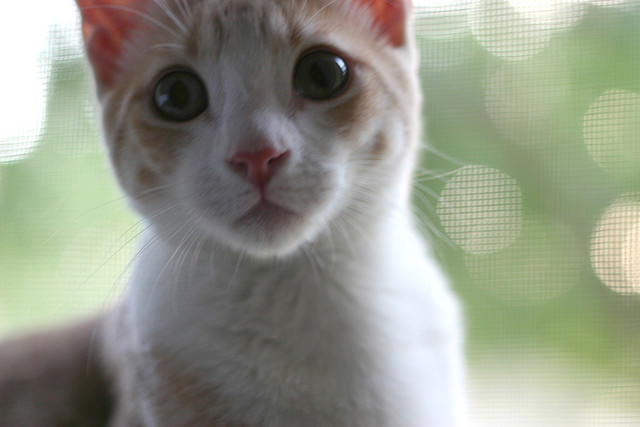Like you, your cat’s body is made primarily of water. In order to remain healthy and properly hydrated, your cat must consistently take in enough water to replace what she loses through basic functions like using the litter box and breathing. When fluid levels drop below normal– either from a reduced water intake or an increased loss of fluids– your cat will become dehydrated. Proper hydration plays a critical role in all of your cat’s bodily functions, including circulation, digestion, and waste removal. Because of this, dehydration can be very dangerous and even fatal if not recognized and treated immediately.
According to our friends at Petlibro, it depends. There are many factors which affect how much water your cat should drink per day. First and foremost is a cat’s size and weight. The heavier and larger your feline friend is, the more water they’ll need to consume to stay hydrated. On average, a cat should drink around 3.5 to 4.5 ounces of water per day per 5 pounds of body weight. If you use metric, that’s 99 to 128 ml of water each day per 2.2 kgs of body weight.
Petlibro provided this table to get a good idea on how much your cat needs to drinking on a daily basis, according to their weight:

Your cat may neglect drinking enough water for a number of reasons including (but certainly not limited to) a lack of fresh water, an inappropriately placed water bowl, or illness. Our friends at Petlibro are reintroducing their natural love for water with these unique water fountains.
Read on for six signs that your cat needs to drink more water. Note that, since cat’s are notoriously sneaky and skilled at hiding health problems, some of these signs may not be obvious until it’s too late. It’s important that you pay attention to your cat’s drinking habits, litter box output, and general health for clues and make an appointment with your veterinarian if you suspect a problem.
Your veterinarian is the only one who can determine a true diagnosis and prescribe a treatment plan. The treatment for dehydration will likely include intravenous or subcutaneous fluids, and well as other tests to determine the cause.
Related: 8 Best Self Cleaning Litter Boxes for Cats

Image Source: Petlibro
1. Not drinking water
If you have had your cat long enough to be familiar with her drinking habits, you may notice quickly if she isn’t drinking sufficient water. Paying attention to whether she drinks when she’s walking around your home or how much water is gone when you refresh her bowl can go a long way in discovering a problem before it gets out of hand.

Image Source: Teresa Boardman via Flickr.com
2. Increased urination
Remember that your cat needs to take in water to replace what she loses. A cat who is losing an abnormal amount of water through urination is at a high risk for being dehydrated. Increased urination can also deplete your cat of vital nutrients and can be a sign of a serious illness such as diabetes.

3. Vomiting or diarrhea
Similar to if your cat is experiencing increased urination, vomiting or diarrhea can quickly dehydrate your cat and deplete her of nutrients. In addition to dehydration, vomiting and diarrhea can signal a serious illness and can result in rapid weight loss.
4. Decreased skin elasticity
Your cat’s skin elasticity is one of the easiest ways to determine whether or not your cat is dehydrated. Simply pull up some skin at the scruff of her neck and release it. The skin of a healthy and well-hydrated cat will bounce back to normal quickly, while the skin of a dehydrated cat will stay in a stiff peak for several seconds before slowly receding.
Note: This test may not be accurate if your cat is overweight or very thin.

Image Source: ArtBrom via Flickr.com
5. Panting
Cats pant as a way to regulate their body temperature since they lack sweat glands. Though intended to ward off the dangers of overheating, panting can cause its own health risk as moisture is lost through your cat’s mouth.
The risks associated with panting, of course, are twofold since a panting cat is a hot cat and heat stroke is a very serious and life threatening problem.

Image Source: Melissa Wiese via Flickr.com
6. Slow capillary refill
Bad circulation can indicate dehydration. You can check this by pulling back your cat’s top lip and pressing the flat of your finger against her gum for a couple seconds. You’ll see a white mark when you remove your finger. In a healthy and well-hydrated cat the area will turn pink again within 1-2 seconds.
Petlibro is offering our iHeartCats readers FREE SHIPPING for any orders over $50 today!
Petlibro Stainless Steel Pet Water Fountain
Made from high-quality 304 stainless steel, this fountain is ideal for messy cats and busy families. It’s easy to clean, very durable, and is rust and corrosion resistant. It’s also BPA-free, and all parts except the pump and filters can be cleaned in a dishwasher.
The adjustable water flow allows you to increase or decrease the flow of water to match your cat’s needs. Want to encourage your cat to drink more to avoid dehydration and suffering from urinary and kidney diseases as a result? Just increase the water flow with a simple turn of the pump control on top of the fountain.
Petlibro Capsule Automatic Pet Water Fountain
Pure water on-tap 24/7. That’s what your cat can look forward to with Petlibro Capsule Automatic Pet Water Fountain. The 5-level filtration system features ion exchange resin and coconut shell activated carbon, which work together to purify the water.
It’s also startlingly silent. Clocking in at ≤28dB, which is quieter than breathing, neither you or your cat will be kept up at night, even as the water continues to circulate 24 hours a day.
Petlibro Rainbow Automatic Pet Water Fountain
This fountain is specially designed for cats who suffer from feline acne. The fountain is made from Alpine clay, a safe and natural material that’s safe for your cat’s delicate skin. There’s no worry of your pet pal ingesting harmful plastics and metals.
It’s also easy to clean and dishwasher safe. Every part of the fountain except for the pump and filters can be cleaned in the dishwasher. And talking of those filters, there are 4 in total. The result? Safe, clean water for your cat.


